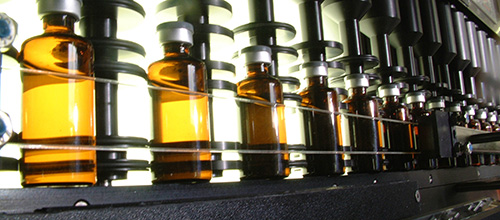ECA comments on FDA Guideline on Visual Inspection
Recommendation

Thursday, 12 February 2026 9 .00 - 17.00 h
The FDA had published its long-awaited Guidance on Inspection of Injectable Products for Visible Particulates as draft in December 2021 - as also reported under FDA publishes Draft Guidance on Visual Inspection of Parenterals. Comments were open until mid of February 2022. The members of the Advisory Board of the ECA Visual Inspection Group took advantage of this opportunity and submitted numerous comments.
A core statement of the group was: The document focuses too much on particle size. There is no clear guidance on what sizes are "acceptable". The recommendation would be to separate representative particles from production from non-representative particles.
Some of the comments can be found here as examples:
| Line 19-22 | We understand that this refers to USP<790> and the section "Sampling at Batch Release" and the reference to single sampling plans for normal inspection with an AQL of 0.65%. We would disagree for the USP<790> section "Product in Distribution". Here the approach has no link to cGMP and is only in order to evaluate product already released and in the market. This needs to be more specified stating the section!! USP<790> already states that "Alternative sampling plans with equivalent or better protection are acceptable." This does fully comply with the intention of this draft Guideline. |
| Line 90-116 | The text is to some extend contradictory. It starts with referencing USP General Chapter <1> and its requirement to follow USP General Chapter <790> to conclude that following USP General Chapter <790> alone is not sufficient to point out again to USP General Chapter <1> and its requirements that needs to be taken into consideration. This twisted argumentation should be replaced by a much shorter explanation that FDA expects both General Chapter should be followed, including the request for a risk-based definition for product specific standards in production and in testing |
| Lines148 et seqq | A revision of Annex 1 (Manufacture of Sterile Medicinal Products) of the PIC/S and EU GMP Guides has been prepared in co-operation with the European Medicines Agency (EMA), WHO and PIC/S in order to maintain global alignment of standards. In addition, sections 8.30 and 8.31 are providing what must be considered additional GMP considerations for the visual inspection process. It would be more than highly appreciated if FDA as a PIC/S member would align any new Guideline with existing or nascent PIC/S guidance documents. |
| Line 485 - 487: Typically, the percentage of defective units in a test set should not exceed 10-20 percent, and the test set quantities should be sufficient to provide an adequate degree of confidence in the test results. | This goes back to J. Knapp, H. Kushner (Generalized Methodology For Evaluation of Parenteral Inspection Procedures, PDA J Pharm Sci and Tech, 1980, 34, p. 14-61) with the focus on particle detection. Correct number: not more than 25% defects...once there are other "obvious" defects within the test set the percent can be higher as the 10-20% are only for the focus of particles within units. A better wording would be: |
All ECA comments on the FDA draft can be found in the ECA Visual Inspection Group statement. You can also sign up for notifications of changes in areas of interest on the website.
Information on free membership can be found on the ECA Visual Inspection Group website.




